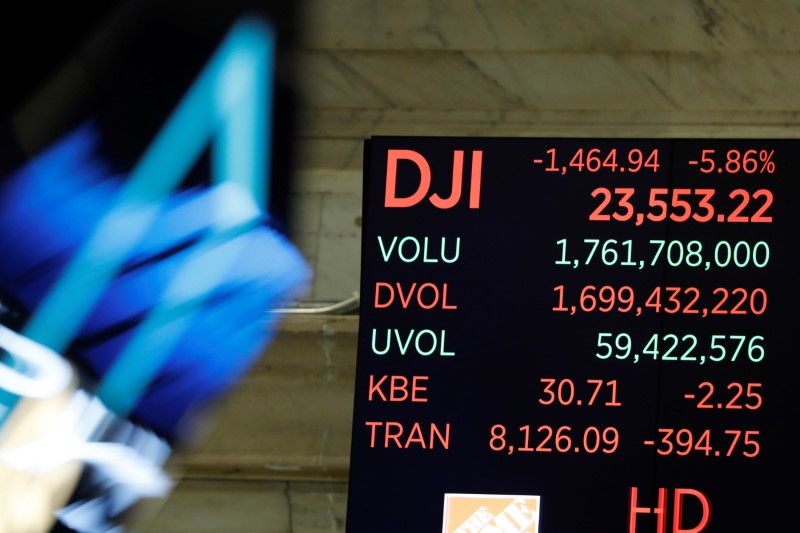By Noel Randewich
(Reuters) - As Wall Street extended its deep sell-off on Wednesday over fears about the coronavirus, the Dow Jones Industrial Average effectively erased the last of the once sizeable gains it made under U.S. President Donald Trump.
Trump's request for Congress to approve $500 billion in cash payments to taxpayers along with $50 billion in loans for airlines failed to stem the bleeding in the stock market, where the Dow Jones Industrial Average (DJI) tumbled almost 11% before partly recovering to end down 6.3%.
Trump has repeatedly boasted about and taken credit for the stock market's performance during his three years in office, including as recently as last Saturday after a strong rebound the day before. Trump has also warned that Wall Street would fall if a Democratic candidate wins the November presidential election.
By Wednesday's close, the Dow was up just 0.4% from where it was on Jan. 20, 2017, the day of Trump's inauguration. The Dow is still up almost 9% from when Trump unexpectedly won the presidential election on Nov. 8, 2016.
Measuring the stock market's performance under the Republican president beginning at his election date captures a surge immediately after he won, dubbed the Trump Bump, as investors became optimistic about Trump's promises to cut taxes and reduce regulations.
At its February peak, the Dow had surged more than 60% from Trump's election day.
The S&P 500, a broader measure of the U.S. stock market, tumbled 5.2% on Wednesday, leaving it up just 12% since Trump's 2016 election and up 6% from his inauguration. At its peak, the S&P 500 had gained 58% since Trump's election.

Overall, the S&P 500 has slumped nearly 30% from its Feb. 19 peak and ended a bull market that began in 2009.